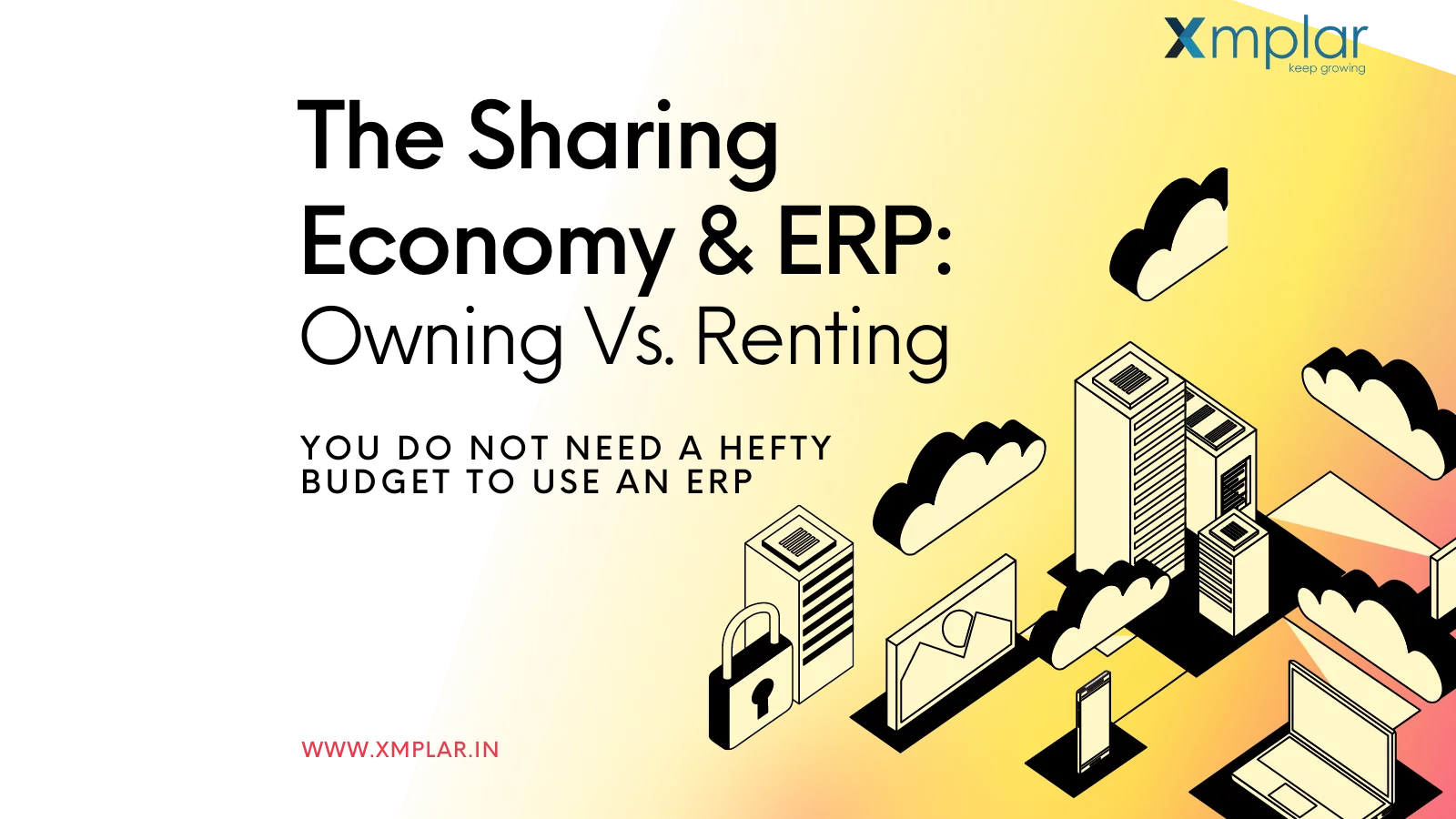The Sharing Economy And ERP: Owning Vs. Renting
XMPLAR
October 7, 2021
Business profits are a function of market competitiveness and management effectiveness. An ERP Software helps your business to be managed better, which could eventually improve your market competitiveness.

The story so far
We are living in the days of Airbnb, Uber and the like. When owning something is not the necessary pre-condition for using it. The advantages to the consumer are several, right from not having to spend a tidy sum on a car or a house, to avoiding the collateral hassles of their upkeep.
So is the case with software. In the past few years, most commercial software applications have moved into the rental model – Software as a Service or SaaS. Under the old licensing model, you buy the software and ‘own’ a certain number of ‘licenses’ to use it. Nonetheless, you still do not own the software! And then you keep paying a hefty annual fee, labelled AMC, only to be eligible for updates and ‘support’. The early days of the shift from the licensing model to SaaS were fraught, as businesses were unsure of what they were gaining, or on some counts, losing. IT Departments feared their redundancies, as it was no longer necessary to have a large team to manage hosting and maintaining the software continuously. IT budgets went down suddenly from a few crores or lakhs of rupees to a few thousand. However, that change was inevitable, and nobody could have stopped it in its course.
Hitting the cloud
The next stage in the evolution, entire IT infrastructure moved to completely virtual environments, from completely physical environments. Software product engineering adapted itself to building ‘for cloud’. This meant that several constraints of the past, such as internet bandwidth, data storage, memory availability etc. could well be ignored. The ‘elastic’ infra of cloud that offered the convenience of using resources only when needed and only for the length of time needed made things genuinely simpler for application developers. Finally, it was possible to design and build software, focusing only on the core software aspects of functionality (what it does), usability (how it looks and how you can put your hands around it) and performance (speed, errors, worrisome crashes!). So, we are in the best of times with respect to running and growing a business using software.
What’s there in it for me, the end-user?
Well, everything. If you care to find out, that is.
The early SaaS days did not allow you the flexibility of having your own ‘instance’ of an application, with the freedom to manage it yourself. Cloud adoption has made it possible. These days, even the complete application development takes place on-cloud, which ensures that there is very little lag in delivering changes, updates etc. to an application.
The cloud model also lets you have your application on a public cloud or on a private cloud open only to your team, with the associated benefits that flow from it.
When you hear ‘cloud’ in the software context, it only means a delivery model or platform. The software application still comes to you in a SaaS model, pay-as-you-go. If it is a pure SaaS play, cloud hosting cannot be separated from the subscription. In other cases, the application provider may give you the flexibility to use your own hosting and its administration. However, you should be prepared to deal with all aspects of it, including cyber security, which could prove to be a challenge for SMEs. It is always more convenient and value-for-money to opt for the full-stack plan if you ask us.
